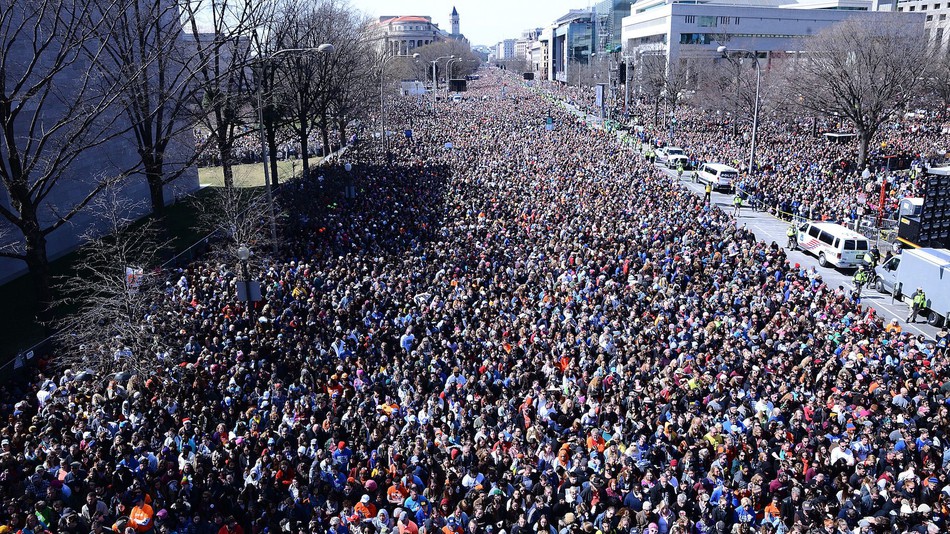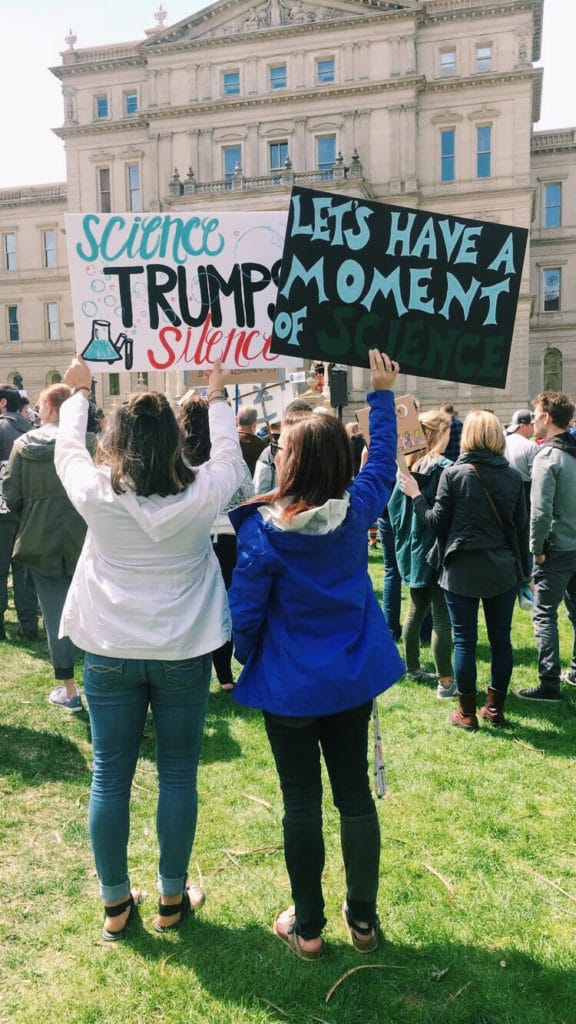
#StartYourStory is an ongoing series that explores storytelling lessons from popular media and how we can apply them to branding our organizations and businesses.
Last month, high schoolers organized one of the largest protests in American history in a matter of weeks. On March 24, an estimated 1.25 million people marched across the country. What’s more, in the past two years, the U.S. has witnessed 4 of the 5 largest protests in its history, excluding only anti-Vietnam war demonstrations.
It has to be acknowledged that the ability to mobilize using social media makes comparisons between protests before versus after the advent of the internet an issue of apples to oranges. Nevertheless, there’s a reason so many people have gotten involved, and it can’t be solely attributed to this one variable.
Technology deserves credit for the logistics of these movements, but not for the stories surrounding their origin. Facebook and Twitter can’t teach someone to care about the process of science, to believe women’s rights are human rights, or any other driving attitude behind these demonstrations. Whether you agree with their purpose or not, watching an 11-year-old articulate wisdom beyond her years reminds us that the ideas youth get behind are the way of the future.

My favorite storytelling from these recent demonstrations comes from those who show how today’s youth journalism and media activism echo the civil rights movement. A student from Chicago, D’Angelo McDade, quoted Dr. King’s famous line: ‘Darkness cannot drive out darkness, only light can do that. Hate cannot drive out hate, only love can do that,’ and added, “which now leads me to say that violence cannot drive out violence, only peace can do that.”
The parallels between the demonstrations of the 1960s are uncanny, and not just because a few speakers quoted Dr. King, but because the maturity of these students in the face of adversity is remarkable.
But a major question remains for marketers, storytellers, PR pros and communicators alike. How can we get people motivated this same way, except around what our organization offers or does?
The answer isn’t simple, but community has a lot to do with it. Rallying behind a movement is more than sounding off about your commitment — participation in these demonstrations is a non-verbal symbol that lets us tell the world we’re part of something bigger. Differences in socioeconomic background, race, religion, gender, ethnicity, age, sexual orientation or any other characteristic fall silent as our values (whether rights for all, reducing gun violence, or funding science) join each of us in one community: humanity.
But it’s a challenge to make sure the right stories are told. Following the March for Our Lives demonstrations, students from Parkland, FL created a Twitter platform for sharing the experiences of those underrepresented in the conversation. In less than 3 weeks, it has nearly 10,000 followers — clearly, the content is captivating and relevant. Inclusivity is imperative for connecting with a larger audience.
When it comes to your cause, think about what you stand for at a higher level. Yes, your products or services are great, but the most vibrant and enduring campaigns bring people together with deeply personal connections.
When it comes to your cause, think about what you stand for at a higher level. Yes, your products or services are great, but the most vibrant and enduring campaigns bring people together with deeply personal connections. If you can give people the chance to show others what they value, to connect with one another beyond a retweet or like, or to talk about what matters, your efforts will be less likely to miss the mark.
Obviously we aren’t all nonprofits working for a social purpose, and I’m not necessarily advocating cause-related marketing. What I am advocating is a reminder, to both yourself and your customers or clients, of why you got into this business in the first place.
These movements are no accident. Go back to your organization’s mission statement. Ask both the founder and the newest intern why they come to work for your business every day. This will undoubtedly tell you something about the purpose behind the place or purchase.
Looking for more on how to inspire action in a genuine way? Simon Sinek’s Start with Why podcast offers some valuable insights on this topic.
Have recent demonstrations or youth activism inspired you to harness the power of community for your business? We’d love to hear about it.
